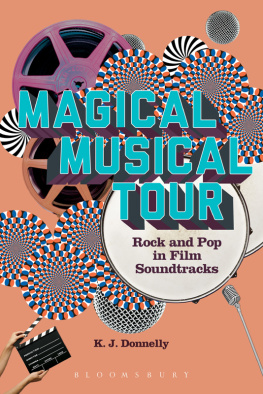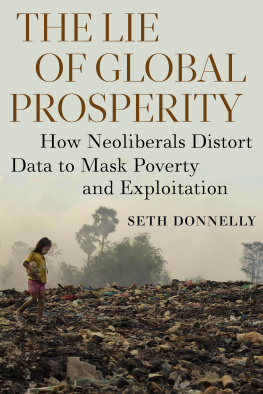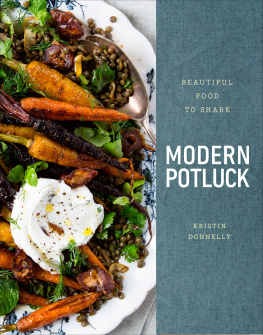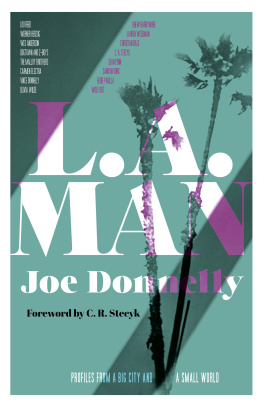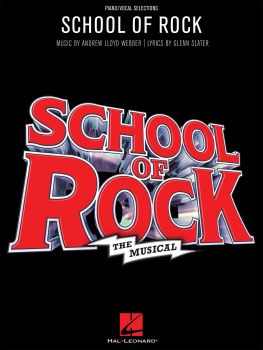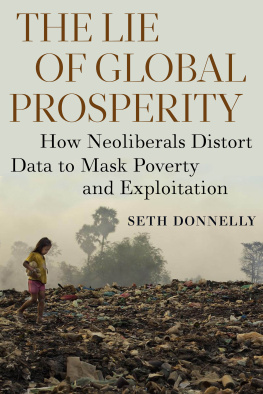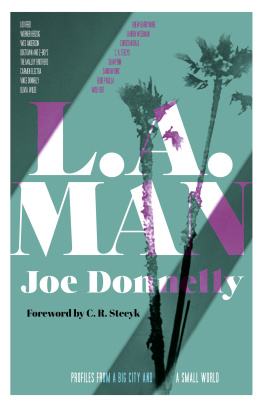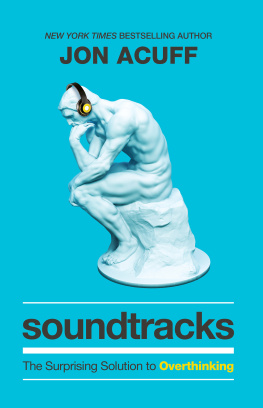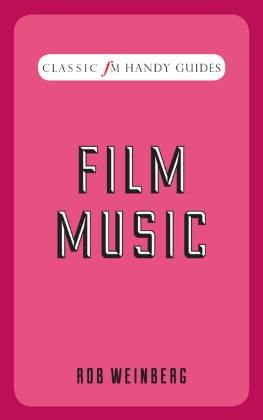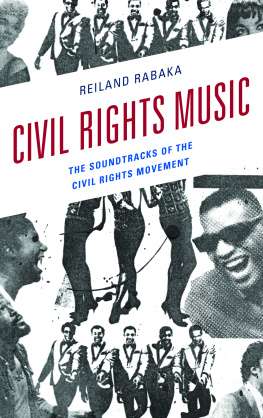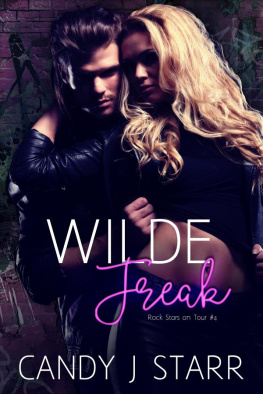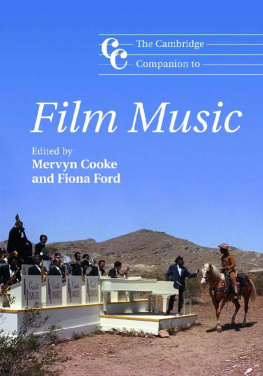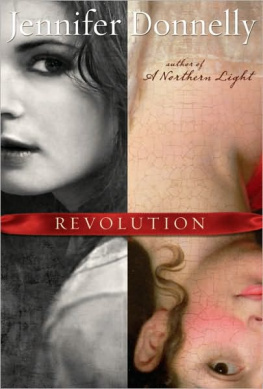Donnelly - Magical musical tour: rock and pop in film soundtracks
Here you can read online Donnelly - Magical musical tour: rock and pop in film soundtracks full text of the book (entire story) in english for free. Download pdf and epub, get meaning, cover and reviews about this ebook. publisher: Bloomsbury USA, genre: Non-fiction. Description of the work, (preface) as well as reviews are available. Best literature library LitArk.com created for fans of good reading and offers a wide selection of genres:
Romance novel
Science fiction
Adventure
Detective
Science
History
Home and family
Prose
Art
Politics
Computer
Non-fiction
Religion
Business
Children
Humor
Choose a favorite category and find really read worthwhile books. Enjoy immersion in the world of imagination, feel the emotions of the characters or learn something new for yourself, make an fascinating discovery.
- Book:Magical musical tour: rock and pop in film soundtracks
- Author:
- Publisher:Bloomsbury USA
- Genre:
- Rating:3 / 5
- Favourites:Add to favourites
- Your mark:
- 60
- 1
- 2
- 3
- 4
- 5
Magical musical tour: rock and pop in film soundtracks: summary, description and annotation
We offer to read an annotation, description, summary or preface (depends on what the author of the book "Magical musical tour: rock and pop in film soundtracks" wrote himself). If you haven't found the necessary information about the book — write in the comments, we will try to find it.
Donnelly: author's other books
Who wrote Magical musical tour: rock and pop in film soundtracks? Find out the surname, the name of the author of the book and a list of all author's works by series.
Magical musical tour: rock and pop in film soundtracks — read online for free the complete book (whole text) full work
Below is the text of the book, divided by pages. System saving the place of the last page read, allows you to conveniently read the book "Magical musical tour: rock and pop in film soundtracks" online for free, without having to search again every time where you left off. Put a bookmark, and you can go to the page where you finished reading at any time.
Font size:
Interval:
Bookmark:
Magical Musical
Tour
Magical Musical
Tour
Rock and Pop in Film Soundtracks
K.J. DONNELLY
Bloomsbury Academic
An imprint of Bloomsbury Publishing Inc

M uch of the material in this book has had a long gestation period, a large part of it going back to my teenage years and obsessive interest in rock and pop music and films. It is satisfying that this deep research was ultimately useful.
Thanks to editor Katie Gallof for being consistently helpful and understanding. Many have helped over the years. Thanks to anyone who did who I fail to mention. Thanks to Wilfred Marlow, Beth Carroll, Daniel OBrien, Ann-Kristin Wallengren, Neil Lerner, Claudia Gorbman, Jack Dubowsky, Glen Creeber, Jamie Sexton, Liz Weis, Peter Brygelsson, Bob Neaverson, Ron Sadoff, Gillian Anderson, Phil Tagg, Erik Hedling, Andrew Higson, Charles Barr, John Street, Christopher Natzen, Stefano Baschiera, Andy Curtis-Brignell, Liu Chu-Ying, Mike Allen, Steve Rawle, Mark Goodall, ex-colleagues at Staffordshire and Aberystwyth, ex-students who have had interesting discussions about music and film with me, and thanks to any musicians that I have ever played with. Special thanks go to Robert Donnelly, Joan Donnelly and Mandy Marler. Their encouragement and support was always beyond the call of duty.
This book includes material that I have sometimes been concerned with before, and a small amount of material has appeared in a different form in these publications:
Pop Music in British Cinema: A Chronicle (London: British Film Institute, 2001), British Film Music and Film Musicals (Basingstoke: Palgrave Macmillan, 2007), The Classical Film Score Forever?: Music in the Batman Films in Steve Neale and Murray Smith, eds., Contemporary Hollywood Cinema (London and New York: Routledge, 1998), British Cinema and the Visualized Live Album in Robert Edgar, Kirsty Fairclough-Isaacs and Benjamin Halligan, eds., The Music Documentary: Acid Rock to Electropop (London: Routledge, 2013). Other material has been presented at SCMS, Screen and MaMI conferences.
I am always surprised that there is not more writing about films and rock music, and in particular, the point where the two form a union. To date, there have only been patchy attempts to deal with popular musics relationship with film, and perhaps this will patch up some holes or merely supply another patchy narrative. It is startling that there is so little written on subject that is so popular as a consumer item and thus has a significant cultural profile. This book attempts to engage the intersection of the two on both an aesthetic and industrial level, dealing with a wide range of material running from Elvis and the Beatles involvement with film to more esoteric intersections of popular music and film. While some chapters are historically inspired reviews, discussing many films and musicians, others are more concentrated and detailed case studies of single films. This book does not aim to be a systematic study of all areas of rock and pop music and film but aims to provide some analytical snapshots of notable instances and issues.
International popular music has been dominated by the United States and Britain since the turn of the twentieth century. The advent of rocknroll in the mid-1950s reinforced this dominance and was embraced by films that wished to add energy, show youthful credentials and make money. On one end of this spectrum, there have been forgettable exploitation films aimed at a quick buck, but on the other, there have been films that remain perennially popular and critically acclaimed, some of which even have credentials as serious works of art. This book focuses on films using popular music since rocknroll in the mid-1950s, a relationship which grew from insalubrious exploitation origins to one of the dominant axes of contemporary culture. The categories of pop music and popular music have been challenged since the late 1960s, particularly by the development of more serious (or rather more self-serious) rock music and some of its extreme forms of differentiation, such as progressive rock. The advent of concept albums, for example, tested the
An important consideration is the relationship of the music and film as industries which have retained ties closer than most other industries and engaged in constant synergy of cross-promotion. Indeed, the popular music industry has become completely interlinked with the film industry. The majority of mainstream films come with ready-attached songs that may or may not appear in the film but nevertheless will be used for publicity purposes and appear on a soundtrack album. Copyright has become one of the fundamental concerns of the modern music industry. While the merging of media companies has allowed some films to use a readymade roster of recordings that already belong to the company, in other cases, the rights for the use of particular songs have to be secured for a film, and in many cases, this does not extend as far as using the song on the films soundtrack album. Indeed, there are some notable examples of the reuse of certain songs across a number of films. For instance, Cockney Rebels Make Me Smile (Come Up and See Me) appeared in a series of different films and over a relatively short period of time (The Full Monty [1997], Velvet Goldmine [1998], Best The George Best Story [2000], Saving Grace [2000] and Blackball [2003]).
Apart, but not totally disconnected from industrial aspects, is the relationship of aesthetics between the two media. Sensual and kinetic matters drive the commercial impetus. In many cases, popular music in films has made for some of the most striking moments in films and the most dramatic aesthetic action in cinema. Examples of some of the most memorable moments in cinema would include Mr. Blonde torturing a policeman to the strains of Stealers Wheels Stuck in the Middle with You in Quentin Tarantinos Reservoir Dogs (1991), the montage of Ben relaxing in the swimming pool and meeting Mrs. Robinson accompanied by Simon and Garfunkels The Sound of Silence in The Graduate (1967) and the memorable potters wheel sequence with the Righteous Brothers Unchained Melody in Ghost (1990).
These days, it is wholly unremarkable to hear rock or pop music in a film, just as it is not uncommon to hear musical underscore in a film that has incorporated elements from popular music. However, analysis can still often spend a great deal of time and effort pulling apart the music and the images, but we should always remember that the two do not work as the sum of each added together. Instead, the fused elements redouble effects and create new configurations and significations. In actuality, music and images in film should never be considered two discourses but a merged unity. This makes music an element of film and makes other film elements a part of music. In such as manner, an image can finish a musical move, like a cadence, the same way that music can provide a comment or particular cast on an image.
The history of pop-rock films to a large degree is defined by the history of pop-rock. This is hardly surprising, although there are certain points in the development of rock where films have had certain, crucial roles in the dissemination and development of the musical format.
Robust traditions have built and the relationship between the film and music industries remains as strong as it always has been. Indeed, even silent films sometimes included tied-in sheet music. The industrial relationship has developed and surmounted the upheaval that rocknroll caused in the mid-1950s to create a strong and intimate bond. Apparently, DJ Alan Freed coined the term rocknroll as a replacement for rhythm and blues in his WWJ Cleveland radio show to avoid the racial denotation of the latter term. Nevertheless, it was a controversial form of music, and films had to work hard to defuse any threat it was perceived to contain, while simultaneously exploiting its exciting possibilities. The tradition of film musicals, which arguably functioned primarily as vehicles to sell music, reshaped its traditional format to accommodate the new musical form. Examples of pop musicals include Elviss films in the United States and Cliff Richards in the UK. In the early years after rocknroll, these would often employ realistic stage performances (using the performance mode) rather than follow the MGM model of bursting into song (the lip-synch mode). Elviss films such as
Next pageFont size:
Interval:
Bookmark:
Similar books «Magical musical tour: rock and pop in film soundtracks»
Look at similar books to Magical musical tour: rock and pop in film soundtracks. We have selected literature similar in name and meaning in the hope of providing readers with more options to find new, interesting, not yet read works.
Discussion, reviews of the book Magical musical tour: rock and pop in film soundtracks and just readers' own opinions. Leave your comments, write what you think about the work, its meaning or the main characters. Specify what exactly you liked and what you didn't like, and why you think so.

